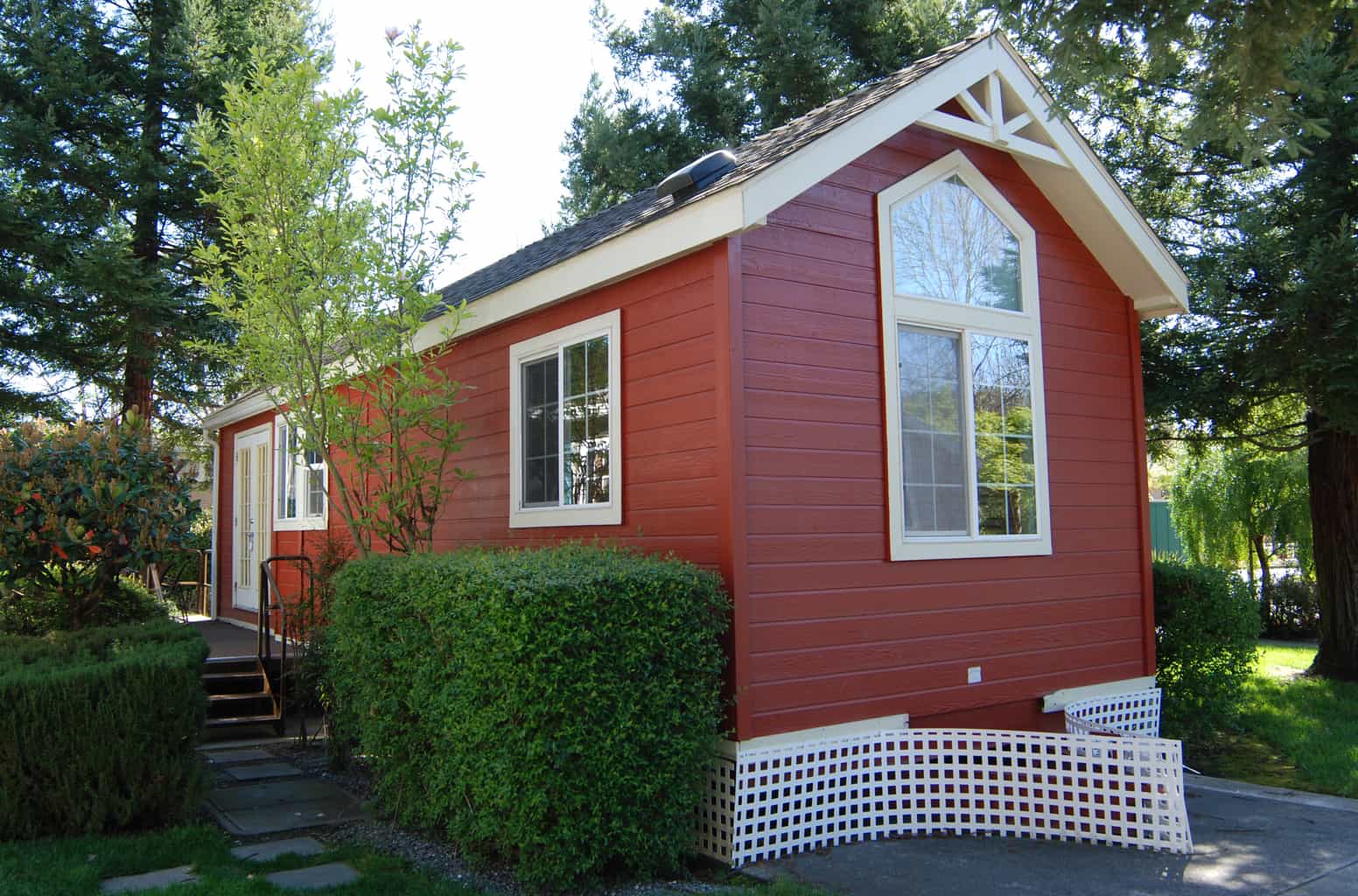
Is A Tiny Home Right For You?
What Is a Tiny Home?
In general, a tiny house is defined as a residential structure with square footage between 100 and 400 square feet. On average, tiny homes are less than 400 square feet.
Some people design and build their tiny home while others use a home kit to help them construct their new house. Of course, if you are not interested in building one yourself, you can pay to have it built.
These tiny abodes are available in a variety of sizes, shapes, and forms. Because so many different options exist, you can choose a home that suits your particular needs and tastes. At first glance, a tiny home can seem rather small as the average American home measures 2,479 square feet. However, the tiny size aside, these houses truly feel like a home.
Features
Tiny homes are comprised of a living area, a kitchen, and a loft for sleeping. Of course, it will also have a bathroom. As with typical residences, you can either rent or own your tiny home. Additionally, you can also choose between a home that is set on a foundation or one that has wheels. The inclusion of wheels on a tiny home gives you the ability to own your home without having to own land.
In addition to containing the typical rooms you find in any residence, many of these tiny homes are designed to be off-grid. For instance, some homes include solar panels that allow you to generate your own electricity. Additionally, some homes are designed to capture and hold its own water, but some state laws prohibit this practice.
In terms of utilities, tiny homes afford you the usual amenities but at much lower cost. For instance, to adequately light, a tiny home requires about six light bulbs, which use approximately 914 kWh per year. This is a mere seven percent of the average-sized home usage lighting needs.
Where Do You Find Them
Sometimes you can find a tiny home located on the property of a larger home, or a tiny home can be situated on its own land. However, where you can park or build your tiny home is determined by local zoning laws. Zoning laws govern the types of physical structures that can be built as well as where they can be located. In regards to tiny homes, these laws vary from state to state.
For instance, some cities allow accessory dwelling units (ADU). An ADU is defined as a second, smaller dwelling on the same property as a traditional single-family house. Additionally, for a tiny home to be considered an ADU, it must have a foundation.
Because there is no consensus as to the definition of a tiny home, it can be difficult to determine where tiny homes are actually allowed. To add to the confusion, most places define a home as having a foundation, so if your tiny home has wheels, it most likely will not qualify as a house. Many tiny homes on wheels are RVIA certified, which technically–as well as legally–defines them as travel trailer RVs, allowing you a lot more flexibility regarding where to park your home.
Although tiny homes are allowed in each US state, the following are the most welcoming.
– California
– Texas
– North Carolina
– Florida
– Oregon
Benefits
Environmental Impact
Many people choose to live in a tiny home because of the small environmental footprint. For instance, to build an average American home, seven logging trucks filled with lumber are required. A tiny home, however, requires one logging truck–only half filled. Additionally, the smaller space allows you to use less energy and encourages less consumption in general.
Financial Benefits
On average, to build, a tiny house costs between $20,000 and $40,000. If you build one yourself, it will cost, on average, $23,000. In terms of money set aside for retirement, 32 percent of tiny home owners have an average of $10,000 saved for retirement as compared to 62 percent of traditional homeowners who have around $5,000 saved. In terms of credit debit, a whopping 89 percent of tiny home owners have less credit card debt than the average American. Moreover, 65 percent actually have no credit card debt. Finally, 68 percent do not have a mortgage.
Freedom
If you like the idea of waking up in a new place whenever you want while also remaining in the comfort of your own home, a tiny home may be a great choice for you. Because many tiny homes are built on wheels, the inherent flexibility and mobility a tiny home affords you is hard to beat. In fact, with the growing number of remote jobs available, a tiny home is a great addition to a nomadic lifestyle.
Things To Consider
The tiny home movement is about living a simpler lifestyle that affords you everything you need. It is about freeing yourself from debt to allow yourself the ability to enjoy your life rather than spend your life paying for your house.
Although tiny-home living has a lot to offer, it is not for everyone. Because of this, it is recommend that you try staying in one to really get the feel of what it is like to live in a tiny house.
If you are looking at buying a new Tiny house or purchasing a preexisting one. Contact Us At Saint Charles Mortgage to see what Mortgage Options you have available.

